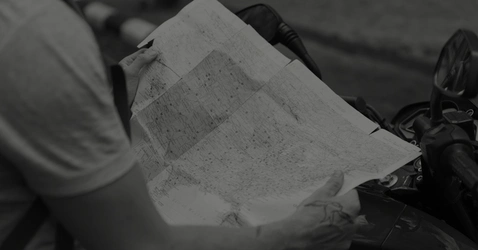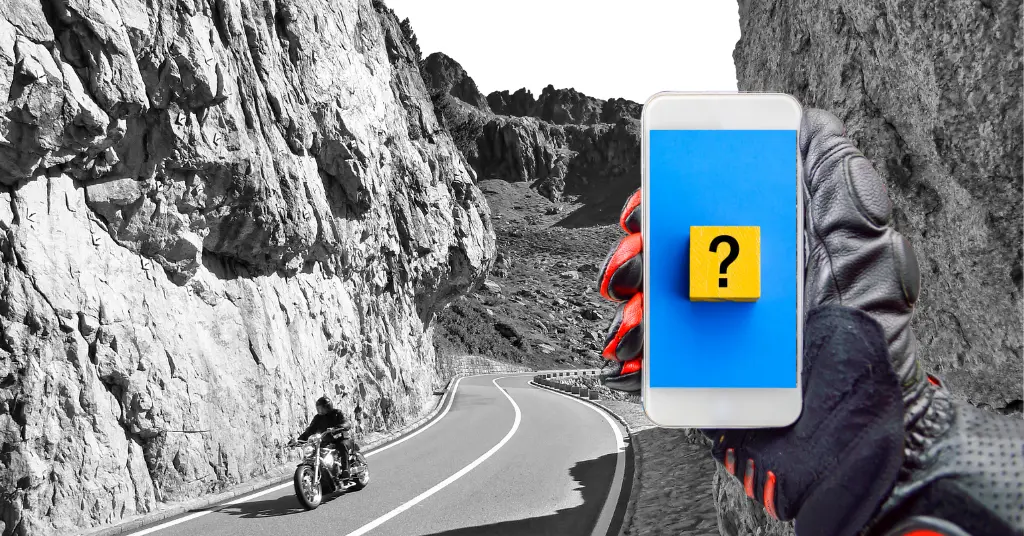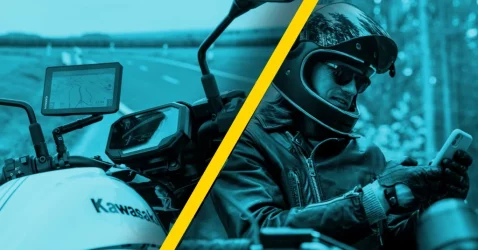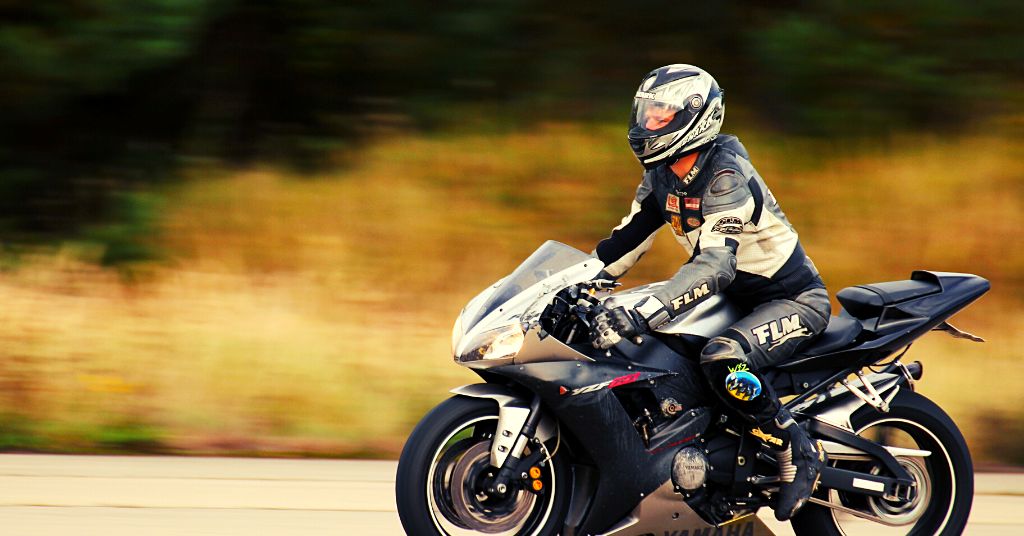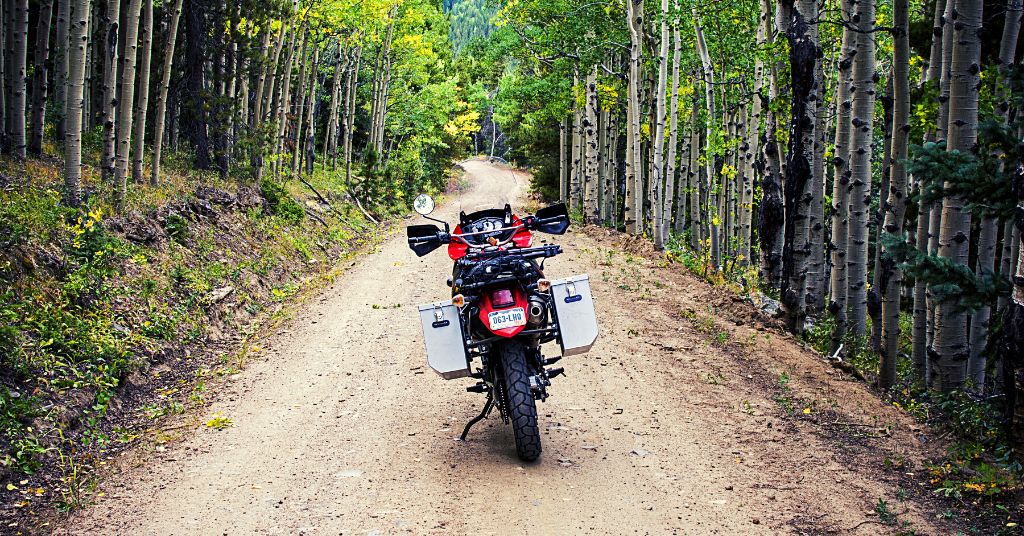
THE MOTORCYCLE HELMET
A LITTLE FAQ
The motorcycle helmet - A little FAQ
A helmet is the main safety equipment when it comes to protective gear for motorcycling. Not only will it protect your head and reduce injuries, but also improves your riding experience; it stops wind, keeps you dry, and deflects bugs, dirt, and other outer possible intruders. This item is your most important piece of equipment, so choose wisely.
Unfortunately, it is not very easy to quickly find the perfect fitting helmet, because it’s more than choosing size and color. With a lot of different brands and systems, it’s very hard to see through – especially with an enormous selection that is available online. This is an important point since you definitely need to try your helmet first and seek advice in a shop, NEVER rely on your friend’s opinion on what’s good or what’s in line with the trend. Choosing the right helmet is about YOU only.
What makes a good helmet?
Firstly, it is important to know what a helmet actually consists of and how it’s built – basically, every helmet consists of four main components: the outer shell, the impact absorbing liner, the comfort padding, and the retention system better known as the strap.
While the outer shell mostly uses fiber-reinforced composites or thermoplastics to disperse the impact energy, the impact liner absorbs the shock using a densely layered cushion. As the name already implies that you should feel comfortable with the comfort padding, whereas the retention system is responsible to keep the helmet on your head in case of a crash. A fiberglass shell is the go-to for strength and it’s lightweight too. Carbon fiber is also very lightweight and a popular choice for racers.
What to look for?
Another very important thing to look for is to ensure you’re buying a certified helmet that complies with the safety standards and regulations. In Europe, all motorcycle helmets should meet the minimum safety requirements for the European standard ECE22.05 which covers both the helmet and the visor. ECE stands for Economic Community of Europe, 22 for the number of regulations for testing, and 05 gives information about the year of amendment, which was in the year 2005. So make sure it’s 100% street-legal.
Which model should I consider buying?
They give you the most direct answer: One that fits you best. This advice is crucial because even the safest helmet on the market won’t be able to protect you if it is too loose or too tight. For this reason, you should always try it before you buy it.
How to take measures?
The key or most significant measure to take is the circumference of your head from the forehead since this is the important measure that manufacturers base their sizing on. This basic measure gives you a first shot at how the helmet may suit your head, but there’s more than that since most helmets can be characterized as generally having a neutral, oval, or round-shaped (internal) profile. While the basic (outer) size of the helmet follows the already mentioned scheme sizes, the internal fit can be modified by changing the cheek pads or crown liners of some helmets.
How do I know the helmet fits?
Well, besides being comfortable as a first step your cheeks should always remain in contact with the helmet as you turn your head from side to side. Secondly, these pads should push on your cheeks, but not so much that you bite down on them. Another very important fact is that the helmet should under no circumstance push too much on the front or the top of your head. This is often neglected, but may become very painful during a long trip and can even cause headaches.
Which helmet is best for me?
When trying a helmet that is factory new it should fit tightly, to begin with, because the padding will compress over time making it fit just a little loser. However, it should never be too constrictive or give you a claustrophobic feeling. Comfort and safety are equally important which means that any protection that a helmet could offer is of no value if it is too uncomfortable to wear.
Which types are available?
Mainly there are three main types of helmet categories available on the market: full-face helmets, open-face helmets, and flip-front helmets.
A full-face helmet always gives you the highest level of safety there is. Most models are usually equipped with a movable visor to protect your eyes which makes them the most popular type.
Open-face helmets are constructed in a similar way but don’t offer face and chin protection. Since they’re easier to handle (especially with sunglasses) and are less claustrophobic, they’re more popular among scooter riders and cruisers.
Last but not least there are flip-front helmets which represent a kind of mixed type and have become more and more popular over time. They offer a high level of safety such as full-face models but also are more comfortable in case you’re about to take a little snack.
Does a new helmet need a break-in time?
Yes, all new helmets need a little break-in time. Mostly this depends on how often you ride and how long. The average rule of thumb is around 2-3 weeks when used every day.
How often should I replace my helmet?
Your helmet should be replaced every five years on average. However, after any kind of crash, you should replace your helmet immediately, no matter what since a slight deformation can already affect the helmet’s structural strength.
Which factors are also noteworthy to consider?
There are many questions you should ask yourself, such as “Is the helmet for touring or shorter rides?”, “Which weather situation will I be exposed to?”, “Will I also ride at night?”, “Would a dark visor for sun protection be useful?”.
Sure, it’s not always easy to navigate through or answer these questions with a specific model in mind, but at least it gives you an idea of how to find your perfect fit. For example, your main priority may be a quiet and lightweight helmet in case you’re planning to do long trips or a Bluetooth connection for audio in case you’re riding in a group. Also, choose a bright color since it’s easier to be recognized in heavy traffic.
Here are some bullet points on what to consider too:
- Weight (1.5kg is about average)
- Noise level
- Replaceable inner material (fit and hygiene)
- Vents for cooling
- Visor specs (Anti-glare, UV protection, Easy removal)
Further tips
Another great piece of advice is to get the Motobit APP. Motobit also helps you to ride more safely by warning you of fixed dangers such as dangerous bends, damaged roads, and much more, as well as of bends that are taken a little too recklessly. The curve assistant as we call it can be key, especially if you are exploring new and unknown areas.
So make sure you not only use a great and safe helmet but also that Motobit is installed and active on your smartphone before setting off on your next tour. If you have not installed Motobit already, get it now for free!
